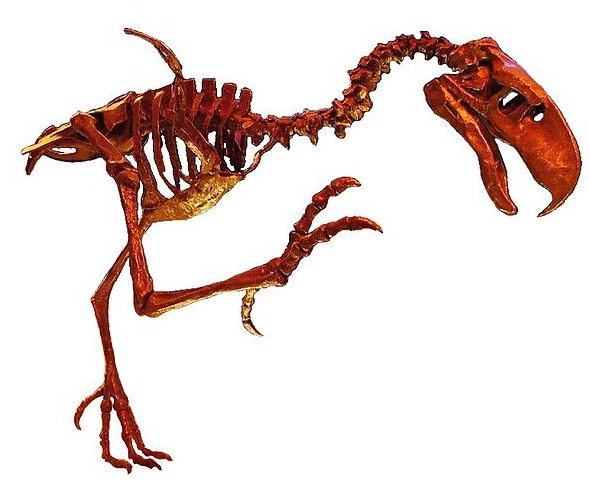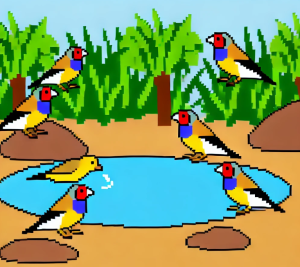
The Mystery of the Terror Birds
Imagine standing on the wind-swept plains of South America millions of years ago. Suddenly, a massive, flightless bird, taller than a human and built like a predatory tank, comes into view. These were the Phorusrhacidae, often referred to as “terror birds.” These ancient creatures were the apex predators of their time, dominating the landscape with their sheer size, speed, and powerful beaks. But despite their fearsome reputation, much about these creatures remained a mystery—until now.
A Step Back in Time: The Discovery
Recently, a team of paleontologists made a groundbreaking discovery in Argentina: the first well-preserved footprints of these terror birds, which are now named Rionegrina pozosaladensis. These footprints, dating back to the Late Miocene (around 8 million years ago), provide unprecedented insight into how these birds moved and hunted. The discovery is not just a step forward in our understanding of these creatures—it’s a giant leap.
Why Should We Care?
You might wonder, “Why does this matter to me?” The answer lies in the connection between these ancient creatures and the world we live in today. The terror birds were once rulers of their environment, much like certain species today. Their story is a cautionary tale of survival, adaptation, and extinction. Understanding their way of life helps us appreciate the delicate balance of ecosystems, both past and present. Moreover, this discovery connects us to a time when the natural world was vastly different, yet driven by the same principles of survival that govern life today.
The Hunt: How Terror Birds Captured Their Prey
The preserved footprints tell us a lot about how these terror birds lived. Imagine a creature that was not only massive but also fast, capable of running down prey with deadly precision. The footprints suggest that these birds had a didactyl posture—meaning they primarily used two toes for running, much like modern ostriches. However, unlike ostriches, the terror birds had a large, curved claw on their second toe, likely used for pinning down prey.
This is where the terror birds’ hunting method becomes fascinating. They didn’t just rely on speed; they were strategic predators. The raised claw, inferred from the footprints, was probably a key tool in their hunting arsenal. After chasing down their prey, they would use this claw to deliver a fatal blow or pin the prey to the ground, ensuring a quick and efficient kill.
The Importance of Footprints
Footprints are more than just marks in the dirt—they are records of behavior. These fossilized tracks offer us a snapshot of a moment in time, preserved for millions of years. By studying these footprints, scientists can reconstruct the movement and behavior of animals that no longer exist. In the case of Rionegrina pozosaladensis, the footprints reveal a lot about the terror birds’ lifestyle. They suggest that these birds were not just large and imposing; they were also incredibly agile and adapted to a predatory lifestyle that required both speed and power.
The footprints also show that these birds had a specialized gait, with most of their weight supported by the third digit. This adaptation likely made them highly efficient runners, capable of reaching impressive speeds while maintaining balance and control. The presence of a smaller, elevated fourth digit further indicates that these birds had evolved for fast, sustained running—traits that would have made them formidable hunters.
From Prehistory to the Present: Lessons Learned
The story of the terror birds is a reminder of the power of evolution. Over millions of years, these creatures adapted to their environment in ways that allowed them to thrive. However, despite their dominance, they eventually went extinct, leaving only their fossils—and now their footprints—behind.
In today’s world, we see similar patterns of adaptation and extinction. Species that once thrived are now struggling to survive due to changing environments, much of which is driven by human activity. The terror birds’ story is a stark reminder that no species, no matter how powerful or well-adapted, is immune to the forces of change. It challenges us to think about our own impact on the planet and the legacy we are leaving behind.
The Thrill of Discovery: What’s Next?
The discovery of the Rionegrina pozosaladensis footprints is just the beginning. Each new fossil find adds a piece to the puzzle of Earth’s history, helping us to understand the complex web of life that has existed on our planet. For scientists, these footprints offer a wealth of information that will fuel research for years to come. For the rest of us, they provide a thrilling glimpse into a world that once was—a world where terror birds ruled the land.
But more importantly, this discovery sparks curiosity. What other secrets are buried beneath our feet, waiting to be uncovered? Every fossil, every footprint, is a reminder that the Earth is a living, breathing archive of life, holding stories that are yet to be told.
Get Involved: Join the Conversation
Now that you’ve learned about these incredible terror birds, what do you think? Here are a couple of questions to get the discussion going:
- How do you think the extinction of species like the terror birds compares to modern-day extinction events?
- What can we learn from the adaptations of ancient predators like the terror birds that could apply to conservation efforts today?
Share your thoughts in the comments below! Let’s explore the mysteries of our planet together.
Unlock Science Secrets
Discover revolutionary research and innovative discoveries with ‘This Week in Science’! Designed for educators and science lovers, our free weekly newsletter offers insights that can transform your approach to science. Sign up now and deepen your understanding and passion for science. If you liked this blog, please share it! Your referrals help This Week in Science reach new readers.



